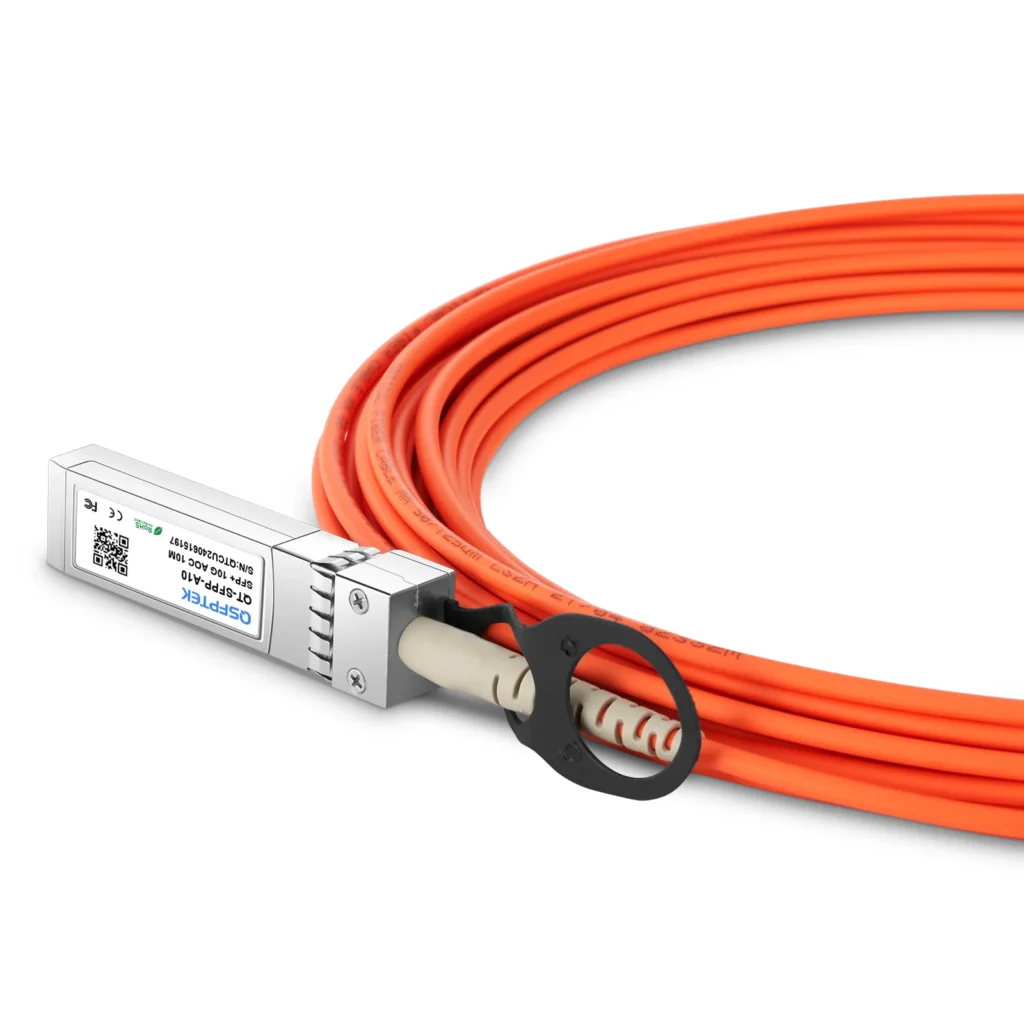As the world moves towards more interconnected and data-intensive environments, the demand for high-speed, low-latency data transmission is at an all-time high. The rise of 5G networks and edge computing technologies is further accelerating this need, pushing the boundaries of traditional network infrastructure. In this landscape, 10G AOC (Active Optical Cable) emerges as a key enabler to meet the performance requirements of these next-generation technologies. In this article, we will explore how 10G AOC can support the data transfer demands of 5G networks and edge computing and its potential role in shaping the future of networking.
10G AOC Overview
10G AOC is a high-performance interconnect solution designed for short-range data transmission. It combines the benefits of both copper and fiber optic technologies, offering the flexibility of copper with the high bandwidth and low latency of fiber optics. Typically used in data centers, 10G AOC cables provide 10Gbps of data transfer speed, making them ideal for high-bandwidth applications that demand low power consumption and high reliability.
The Role of 10G AOC in 5G Networks
5G technology is designed to deliver faster, more reliable internet connectivity to support a wide range of applications, from autonomous vehicles to augmented reality (AR) and virtual reality (VR). To meet these high demands, 5G networks require ultra-low latency and extremely high bandwidth, which 10G AOC cables are well-positioned to provide.
Low Latency: 5G networks rely on minimal latency for real-time data transfer. The direct optical connections offered by 10G AOC cables ensure low signal loss and fast data transmission between network nodes. This low-latency feature is particularly critical for applications such as remote surgery, autonomous driving, and real-time gaming, where even a slight delay can result in performance degradation or failures.
High Bandwidth: 10G AOC’s 10Gbps speed allows 5G infrastructure to handle high data traffic, which is essential for supporting numerous connected devices and large-scale data streams. As 5G services expand, the ability to transmit vast amounts of data at high speed becomes increasingly important, especially for applications like 4K video streaming, IoT (Internet of Things), and smart cities.
Efficient Power Usage: Unlike traditional fiber solutions, which often require active components and complex power management systems, 10G AOC offers a power-efficient alternative. This is crucial for 5G deployments, where energy consumption needs to be minimized without compromising performance.

10G AOC in Edge Computing
Edge computing is designed to process data closer to the data source rather than relying on centralized cloud infrastructure. This reduces latency and improves data processing efficiency. As edge computing becomes more integral to applications like IoT, AI, and real-time analytics, the need for high-speed, reliable connectivity increases, and 10G AOC offers several key benefits.
Faster Data Transmission: Edge devices and data centers require fast, high-bandwidth communication to process data in real-time. 10G AOC provides the high-speed interconnects needed to facilitate communication between edge devices, servers, and storage systems. This ensures that data is transmitted rapidly from the edge to the central systems, enhancing overall system responsiveness.
Scalability: As edge computing infrastructures grow to accommodate increasing data loads, scalability becomes a major concern. 10G AOC cables offer scalability without the need for extensive modifications to the existing network. They are easily deployable, allowing businesses to expand their edge computing environments as needed while maintaining high performance.
Low Latency for Critical Applications: Edge computing often supports time-sensitive applications that rely on fast data processing, such as industrial automation, smart healthcare devices, and autonomous systems. 10G AOC’s low latency ensures that data can be processed and acted upon in real-time, supporting these mission-critical operations.
The Future Potential of 10G AOC in Networking
As both 5G and edge computing continue to evolve, the role of high-speed, low-latency interconnects like 10G AOC will become increasingly important. While 5G will require fast, reliable connections to support the massive increase in data traffic, edge computing will demand highly efficient data transfer to process information locally.

With its ability to provide high bandwidth, low latency, and power efficiency, 10G AOC will play a crucial role in supporting both technologies. It is expected that 10G AOC will see widespread adoption in future network architectures, particularly in data centers, 5G base stations, and edge computing environments. As these technologies evolve, the demand for faster and more reliable data transmission will continue to grow, and 10G AOC will remain a key enabler in meeting these needs.
Conclusion
The future of 5G networks and edge computing relies heavily on the ability to transfer data quickly and reliably. 10G AOC cables provide a cost-effective, efficient solution to meet these demands, offering high bandwidth, low latency, and power-efficient connectivity. As the world continues to embrace the next generation of networking technologies, 10G AOC will play a pivotal role in shaping the future of data transfer, supporting the high-speed requirements of both 5G and edge computing environments.











